Last Updated on February 2, 2022 by Tia
In this article, I will share all the reasons why Costa Rica Pura Vida is a travel experience you simply must-have.
In this all-inclusive, I am giving out all the information on Costa Rica you could possibly need when booking a trip.
Expect to see advice on safety, best areas to stay in, budget, visas, currencies, language, weather, and more.
Because ”Pura Vida” in Costa Rica is more than just a phrase. It is a way of life!
Combining the laid-back attitude of the locals with the country’s rich biodiversity you have yourself a truly paradisaical destination.
And let’s not forget, that Costa Rica is one of the pioneers of Green Living and one of the most eco-friendly countries in the world.
So keep on reading to explore the true meaning of Costa Rica, Pura Vida with me!
Tia Does Travel contains affiliate links. If you decide to make a purchase through these links, I will earn a small commission at no extra cost to you. For full information, take a look at our disclaimer here.

Table of Contents
What Does Pura Vida Mean?
vklfvlkfblfkbm
Basic Information on Costa Rica
The Republic of Costa Rica is a country in Central America, bordered by Nicaragua to the north, and the Caribbean Sea to the Northeast.
Panama is to the southeast, the Pacific Ocean to the Southwest, and Ecuador to the South.
Costa Rica is also one of the most eco-friendly countries in the world!
What is Costa Rica famous for?
Though its capital, San Jose, is home to cultural institutions like the Pre-Colombian Gold Museum, Costa Rica is essentially known for its beaches, volcanoes, and biodiversity.
Roughly a quarter of its area is made up of protected jungle, teeming with wildlife including spider monkeys and Quetzalcoatl birds.
It’s tropical, it’s Eco-friendly….. and definitely travel goals!
I visited stunning Costa Rica for a mere 10 days as it was a trip combined with other American and Central American countries.
I would really love to go back and explore some more…!
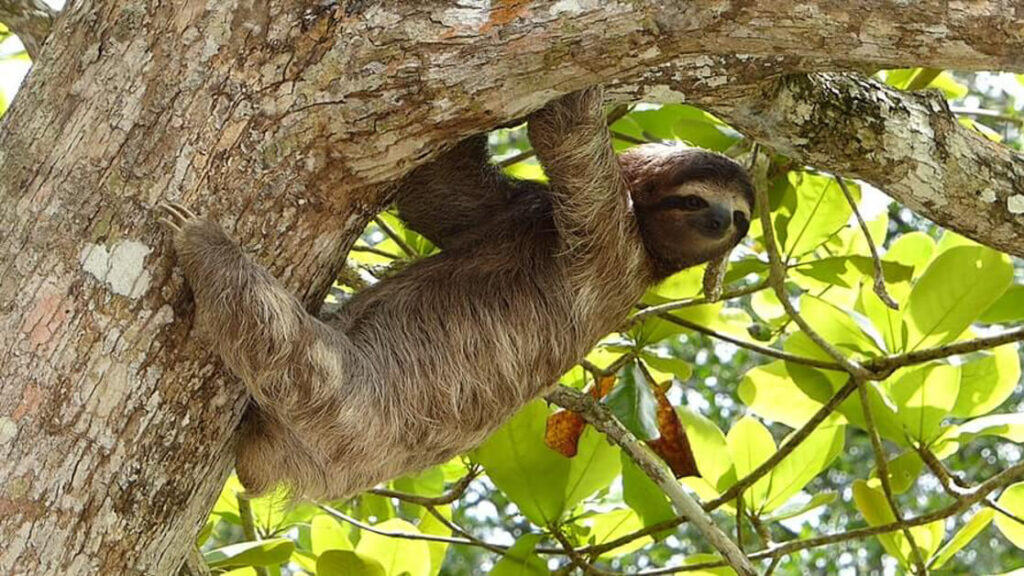
Costa Rica Pura Vida – Which Coast Should I Visit?
This beautiful country is surrounded by both the Pacific and the Caribbean Coast.
Traveling around Costa Rica isn’t always easy and the country is not small either!
With so much to do and see in every region, most people prefer to stay in one general area.
The two coasts are quite different, so deciding really largely depends on your travel expectations and what you like to do.
Let’s break it down below!

The Pacific Side Of Costa Rica
This is a great area for you if you fancy high-end 5* hotels, swimming pools, WiFi, and air conditioning (yes, those are considered luxuries in Costa Rica!).
In my opinion, you can still find great bargains on this end falling right into my Affordable Luxury niche.
Also, are you a surfing fan? Because surfing is one of the top reasons people visit Costa Rica.
In fact, the surf breaks tend to be counted among the best in the world.
It also boasts a large number of established surf breaks and countless surf shops where you can get all your gear.
This of course means, that the waters are a little on the rougher side and snorkeling isn’t really the best.
Lastly, The Pacific Coast is more developed therefore more expensive. It is considered to be one of the most expensive countries in Central America. Even so, I still found it cheap especially if you avoid the American chain restaurants and eat fresh local food!
The Caribbean Side of Costa Rica
The Caribbean offers smaller boutique hotels, eco-lodges, and hostels, along with private vacation rental homes. As a result, the Caribbean side tends to offer a quieter and less crowded experience.
Here, you will also find ideal coasts for water sports like kayaking, snorkeling, and scuba diving, with an abundance of reefs and clear, calm waters.
Budget-wise, the Caribbean Side is cheaper at the moment, but probably won’t stay this way for long.
I hope it continues to retain the gorgeous Afro-Caribbean vibe and authenticity!
Here, the foods are spicier, the music is louder and it’s chilled sleepy beach vibes all day long.
Weather-wise, the climate in the Caribbean has its own microclimate and tends to be slightly wetter than the Pacific.

Is 7 days enough in Costa Rica?
A minimum of 10 days (excluding travel) if you are to explore more than one region (highly recommended).
A two-week vacation in Costa Rica will ensure you see all the highlights of the country, whilst having time to travel between regions comfortably.
I spent a couple of days in the capital of San Jose, 3-4 days in the jungle and another 5-6 days in Jaco (by the sea).
my trip was a combined trip to New York, Belize, and Costa Rica.
I seriously wish I had stayed more!

Costa Rica Pura Vida- What is the currency in Costa Rica?
The currency in Costa Rica is the Colon- Colones for plural.
Fun Fact: It is named after Christopher Columbus who discovered Costa Rica in 1502.
Since 2012 the bills have had a new colorful design inspired by Costa Rica’s wild animals!
The new patterns include the sloth, hummingbird, the morph butterfly, and the white-headed Capuchin monkey.
Dollars are also widely accepted in most parts of the country but cards are not as popular everywhere.
Therefore, please carry cash in small amounts.1 Euro equals 681 colones, so bring a big wallet and pretend you’re a millionaire #goals.

Do I need a visit to enter Costa Rica?
Cypriot passport holders do not require a visa to enter Costa Rica. A 90 days long stay is granted upon arrival.
British nationals, Greece citizens, do not require a visa either.
However, the easiest way to fly there is via the US. Actually, it pairs well with a vacation in New York or Miami!
But even to pass through the airport in the States, you need a US visa. And boy is it a hassle to get one!
TIP: apply for a visa a minimum of 2 months before you travel especially during peak travel seasons!
U.S. citizens from all 50 states and Washington, D.C. can enter Costa Rica via air on flights departing from the United States
US Visa Procedure
You must first visit this site to fill out an online form. The form adjusts itself according to your answers, so it could take you half an hour or it could take you two!
Anyone with a ”safe” job, steady income, and a clean record should be done in about 30-45 minutes.
To complete the form, make sure you have the following things ready:
- Immediate family’s ID numbers
- The address you will be staying in America
- your employer’s contact information
- previous schools and universities names and addresses.
After answering all the questions online, you have to pay 150 dollar fee via bank card and get transferred to an online calendar.
There, you are given the available dates and times for your face to face interview at the American Embassy.

Additional Visa Tips
Unless you are immediately rejected, the interviewing agent will confiscate your passport, and if your visa is approved they will send it to you in 3-4 business days, stamped approved, and ready to go.
Your 150 dollars are not refunded if you are rejected.
The process at the Embassy took a good 3 hours. (Bring snacks. And patience)
Good news is, I now have a gorgeous 10 year American Visa which I can’t wait to abuse until the very.last.day.
My trusted agents at Travel Pass always handle all my visas! contact them here.
Costa Rica Pura Vida – Vaccinations
When traveling to remote destinations, certain vaccinations are a must. Better safe than sorry right?
Tetanus and Hepatitis A shots are the normal ones expected if you will be traveling mostly in the tourist areas of Costa Rica.
Make sure you bring medication for mosquito bites along with a bucket of mosquito repellent (i was basically eaten alive and also got a staph infection!)
Vaccination tips for Cypriots
Cypriot citizens can visit your doctor (or the old Hospital in Nicosia) a minimum of 4-6 weeks before your travels.
If however, you are planning on traveling in remote parts of the country or volunteering in zoos, stray dogs, orphanages etc then you will need additional protection. Click here to find out more
Travel To Costa Rica During Covid-19
Everyone can go to Costa Rica – whether vaccinated with the covid vaccine or not. However, whilst there, things are a little difficult for the unvaccinated.
Particularly, since January 2022, many activities are restricted to those who’ve been vaccinated.
Although entry rules aren’t set to change, restrictions on the ground will make it less attractive for the non-vaccinated.
You now cannot enter a hotel, restaurant, bar or museum without proof of vaccination.
For a more detailed view into the exact requirements and exemptions click here
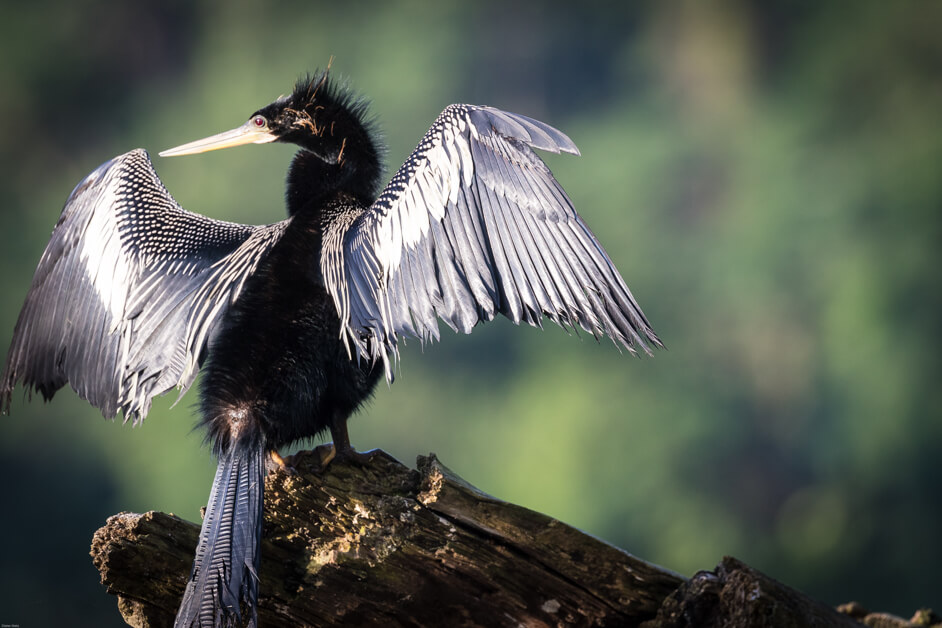
Costa Rica Pura Vida – Flight Duration
Your flights will be the most expensive part of your trip, especially if you are traveling from Cyprus.
Your trip will be split into 2 or 3 flights depending on your connection flights.
Personally, I flew from Cyprus to London, and then to JFK in New York. I then stayed in the city for a few days and explored! After that, I flew from New Jersey to Miami, and Miami to Costa Rica.
From Cyprus: Approximate duration of flights: 12 hrs.
Approximate travel duration including transit and airport times: 19 hrs.
The UK – Aproximately 14 hours. There are no direct flights from the UK to Costa Rica either.
US Citizens – 4-5 hours Direct.
From Greece – 17 hours with a connecting flight.
TIP: Book well in advance and save some major cash! Read my post on how to beat the dreaded Jet lag!

How widely is English spoken in Costa Rica?
The official language in Costa Rica is Spanish.
The level of English spoken is definitely…low.
I was being silly and thought I would be able to talk like a local as I speak Italian. A failed attempt to speak with a taxi driver proved me wrong soon enough!
Some English is spoken especially in tourist destinations, but don’t expect miracles!
Prepare to improvise, use hand gestures, and smile like you slept with a coat hanger in your mouth.
Costa Rican Cuisine
Simple but delicious, the local cuisine is based around rice, beans, fried plantain, and either meat or fish.
There are various Caribbean influences in the dishes and the produce is super fresh.
Not as exciting and variable as Greek, Italian, or Asian Cuisine but very flavorful and fresh.
Oh, and super cheap too!
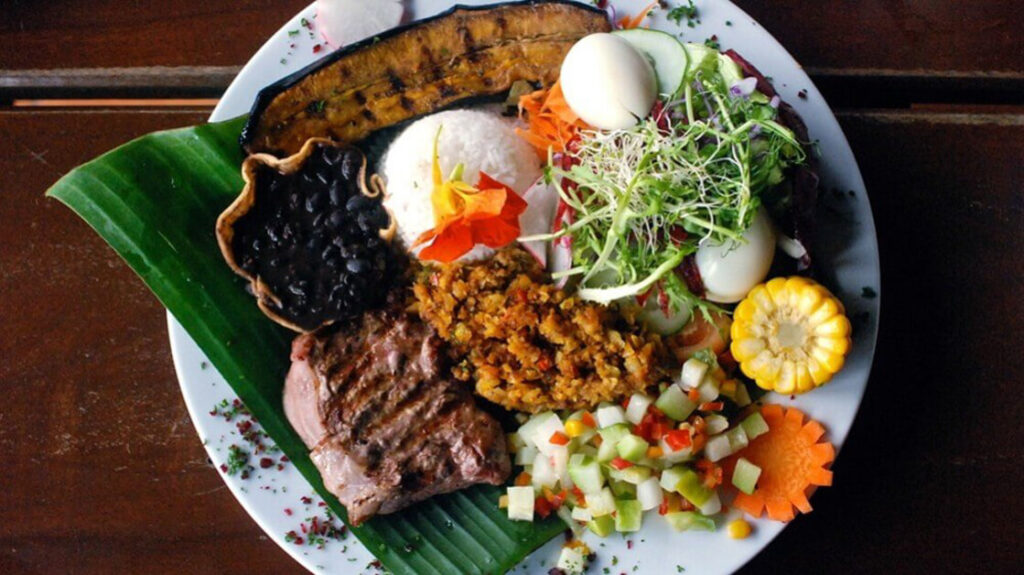
Costa Rica Pura Vida – Is Costa Rica warm year round?
Are you ready for some Tropicana?
Because Costa Rica is tropical to the max! It does however average temperatures from 23 – 33 celsius all year round. So yes, it is warm all year round.
But is it dry? The answer is no.
Let me break it down below!
Costa Rica’s two seasons are the Dry season (January through April) and the Wet season (May through December).
These correspond to the high season and low season.
The highest “peak season” is the two weeks from just before Christmas until after the New Year when prices tend to skyrocket.
The descriptions Dry and Wet apply most accurately to the beach destinations of Guanacaste and Nicoya in the northwest corner of Costa Rica.
The rest of the Pacific side and much of the central mountains follow a similar pattern although with more precipitation in general.
The Caribbean Coast tends to be rainier year-round.
It breaks the rules in September and October when the rest of the country is experiencing the heaviest rain and the Caribbean beaches are warm, dry, and sunny.
Weather Tips
Don’t let the words ”wet season” deter you.
It might rain, it might not. It’s still hot, I promise!
I was in Costa Rica at the end of July and it probably rained once or twice for about an hour max.
The wet season is also appealing as the rain forests and waterfalls are in their full glory! Additionally, prices are halved, beaches and other attractions are not crowded and there are many deals to grab!
Perfect if you are looking to travel on a smaller budget!
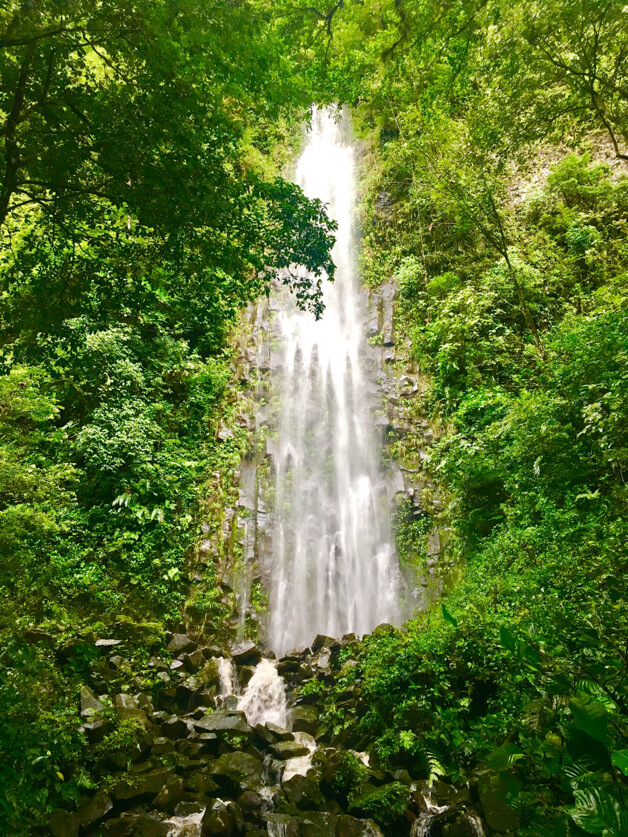
When should you not go to Costa Rica?
I would avoid the rainiest months, which are September and October.
During this time, you could have several days in a row with heavy rainfall and thunderstorms.
What do people normally wear in Costa Rica?
No restrictions here!
People are too chilled to care to be honest.
”Pura Vida” – the Countries National saying, translates to ”good life” or ”Easy Life” – so basically no one really cares.
Just don’t walk around butt naked and you are good to go!
TIP: You will be doing a lot of jungle treks, zip-lining, horse riding, etc. so pack comfortable clothes and definitely a good pair of trainers or hiking shoes.
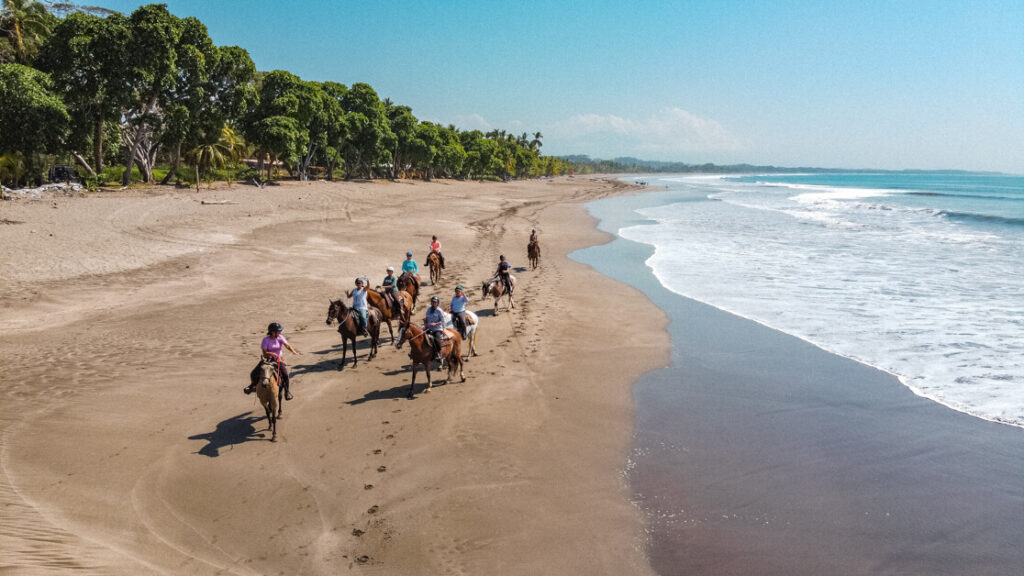
Is it Safe to go to Costa Rica?
Yes! Costa Rica is generally a very safe country- although its surrounding countries of Honduras and Nicaragua are riddled with crime.
Personally, I never once felt threatened, nor did I have anything stolen.
Of course, one must always use their common sense when traveling. For example:
- Avoid flashy jewelry or carrying around a ton of cash
- Don’t leave valuables in your car
- Use your safe at the hotel.
- Get a travel insurance
Transportation in Costa Rica
Your best bet is definitely an SUV Car rental.
I would avoid a scooter, as there’s so much to see in the jungles and rain forests!
From experience, a scooter will be far too dangerous on those roads.
Taxis are also widely available and so is Uber!
Public buses are the transportation of choice for budget-conscious backpackers on extended trips.
Typically they eat up too much vacation time for travelers with only a week or two to explore.

Is Costa Rica cheap or expensive?
Costa Rica is ranked as the most expensive country in Central America and the sixth most expensive in North America and the Caribbean.
As with most countries though, Costa Rica caters to all budgets and styles. I like to mix things up by staying in 3-4* hotels and moving to a 5* here and there.
To figure out your budget, you need to think of 3 things: Accommodation, Food, and Transportation.
The prices points below will help!
Accommodation Prices
- Hostel: 8-15 Euros per Night
- Budget Hotel: 45 Euros per Night. Nothing fancy, but expect a clean room, air conditioning, and hot water
- Mid-range Hotel: 80-100 euros per night for a two-bedroom. For this price expect all the luxury basics; breakfast, A/C, hot water, TV, coffee maker, mini-fridge and pool
- High-End Hotel: 170+per night for a two-bedroom. Everything you might expect from a high-end hotel, along with infinity pools, jungle views, and Instagram worthy pics to spam all your friends at home.

Food Prices
Prices in tourist American-style restaurants tend to mimic American prices. Expect to pay 10-15 euros per meal.
While the price for food is comparable to the US, luckily, drinks are a lot cheaper.
Many restaurants run happy hour specials on cocktails and local beers are approximately 2 euros a bottle.
But seriously who wants to eat at TGI’S when you are on the other side of the world in a tropical paradise?
Instead, opt to visit local eateries called ”sodas”.
A large plate of local food costs a mere 5 euros and you are also supporting a local business.
I love chatting with the locals, they provide such valuable information! The interaction I have with them is one of the highlights of my trips.
Transportation Prices
- An SUV rental cost me approximately 350 euros per week- not cheap, but oh so convenient!!
- Buses are way cheaper at 2-3 euros for a journey
- there are also both shared and private shuttle buses available. I personally dislike sharing anyone else’s schedule on my travels and always avoid large groups like the plague!
Costa Rica Pura Vida -Charging electronic devices
The electrical current used in Costa Rica is 110 volts, AC.
The sockets are American-style, but budget places often don’t have a place for a grounding prong, so bring an adapter.
TIP: buy yourself an international adapter and never have to worry about sockets again!
4 Easy Ways To Save The Planet Whilst Traveling
1. Replace your disposables with reusable items.
For example, cotton rounds, cotton swabs, and tissues. We use trillions of them! I swapped to reusables 2 years ago, and haven’t looked back since!
In particular, I picked up swabs for my ears, pointy ones for my make-up, cotton rounds for skincare, and even tissues.
Yeap, all reusable, from the incredible Last Object, which by the way, delivers from various warehouses – both Europe, Canada, and the US, so you don’t have to pay loads for delivery!
Just ONE of these eco-friendly swabs replaces over 1000 cotton swabs that end up in our oceans! They come in gorgeous colors, are durable, and are super easy to clean! Use code TIA for 10% off all purchases!

2. Get a portable ashtray
Cigarette butts are the single greatest source of ocean pollution, with more than 60 million collected over 32 years! Yuk!
To save our oceans, just carry a portable ashtray like this one in your backpack!
This pack of two can be fastened to any backpack! With every use, you are taking a huge step towards responsible tourism.
3. Carry a water bottle and straw
A simple reusable cup and metal straw are the best, and contribute a lot to the solution; trust me!
This filter bottle is great as it reduces chlorine and micro-particles. You can fill it up from any tap, or at your hotel to avoid buying a million plastic bottles when you travel.
100,000 marine creatures and 1 million sea birds die from plastic entanglement in a year.
Personally, I have tried paper straws and pasta straws too, but I really hate them! This stainless steel straw set comes with a handy pouch, and a brush to clean too!
4. Switch to shampoo and conditioner bars
There is no need to carry plastic bottles that you will later throw away. Not when you can get top-quality shampoo and conditioner in a bar!
This shampoo and conditioner set smells like heavenly lemon and eucalyptus, and don’t laugh, but mosquitos hate the smell of lemon so this is a WIN for me!
Did you like this post? Then share it on Pinterest!
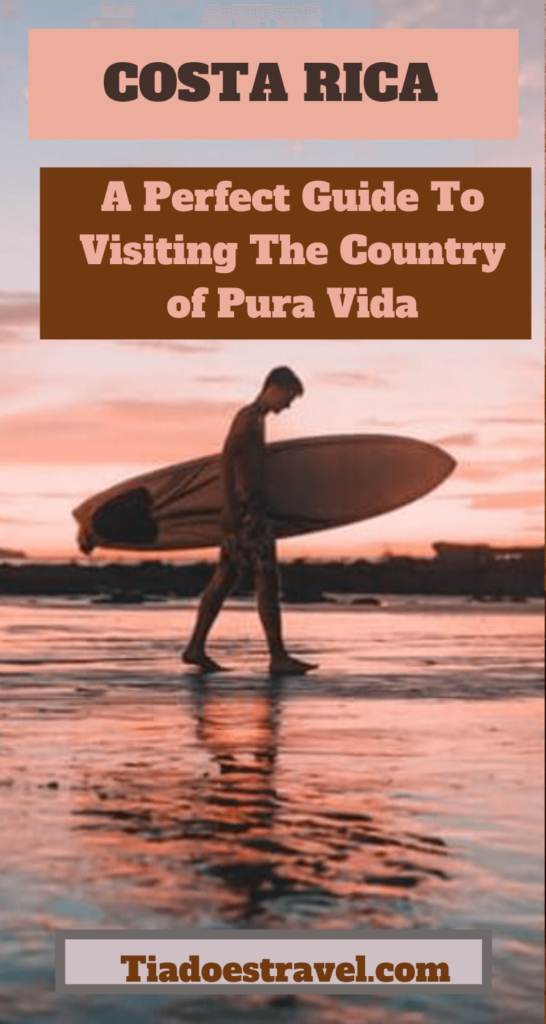
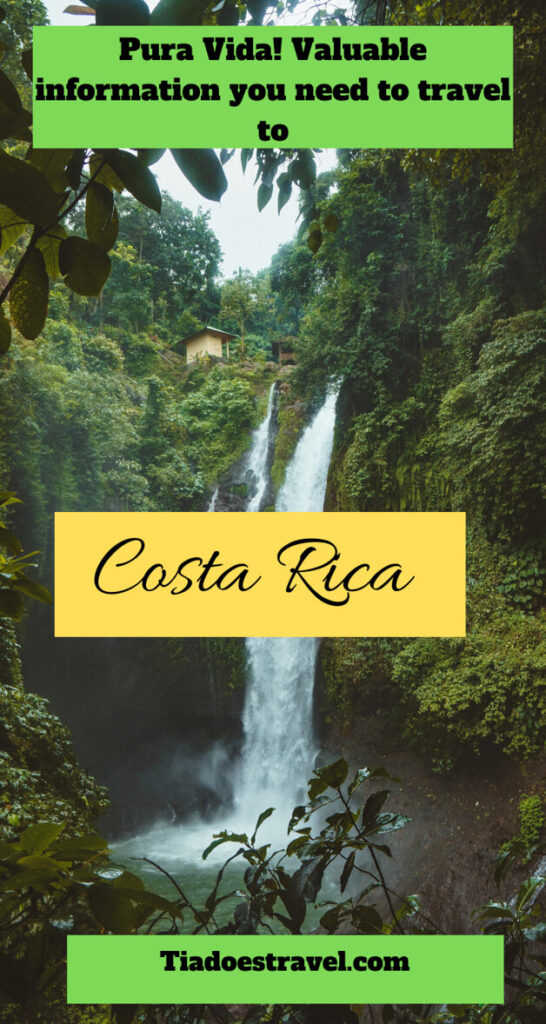
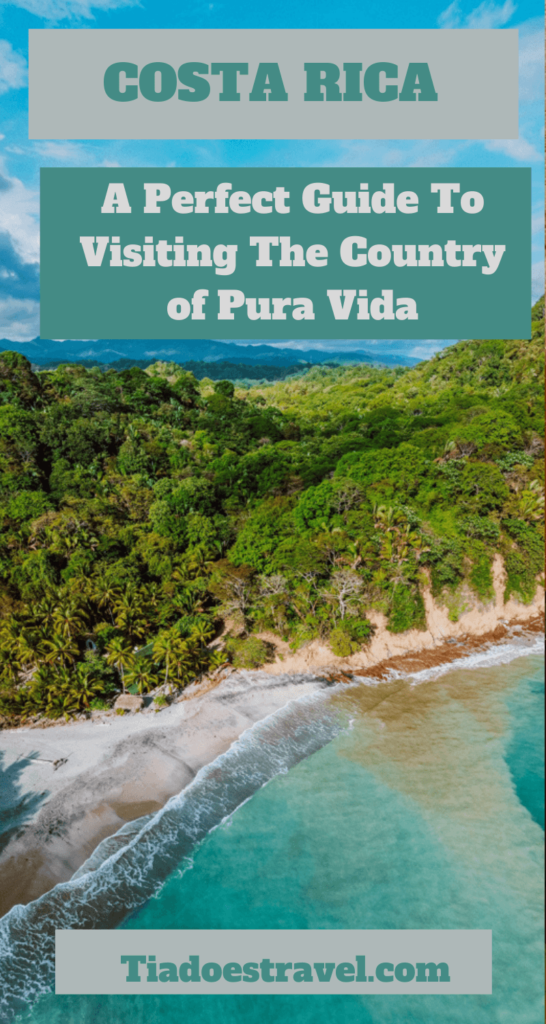
Related Articles
Green Living – Why Costa Rica is one of the most eco-friendly countries on the planet!
Responsible Tourism – A guide to ethical and eco-friendly travel
Exotic Destinations and Diseases – Travel safely to Costa Rica and Beyond
Belize – The perfect Caribbean Paradise to combine with a trip to Costa Rica
New York Itinerary– 24 hours in New York on your way to Costa Rica
Jet Lag and Travel – How to avoid jet lag on long-distance flights
Holiday Planner – How to find the perfect travel agent
